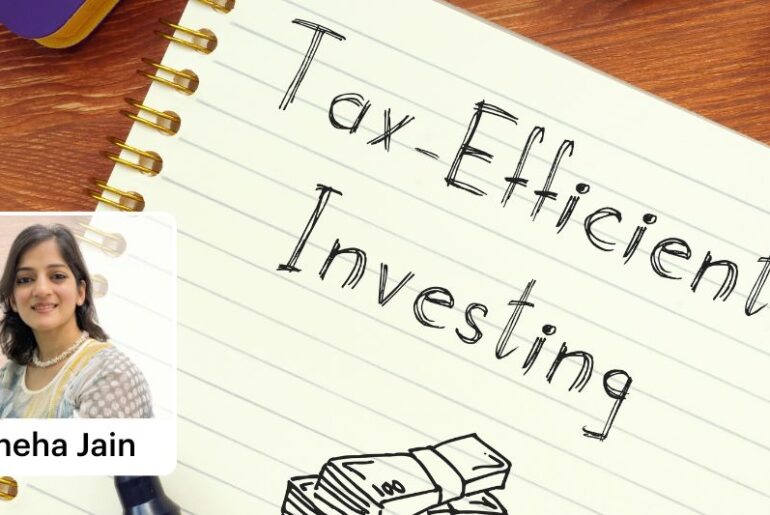Last Updated on May 24, 2022 by
In a bid to provide convenient income tax filing services, the government launched an upgraded e-filing portal earlier this year, which eliminated the room for any manual paperwork, aiming at a better experience for taxpayers transacting online.
The due date for furnishing the income tax returns for the FY 2020-2021 was 31 July 2021. However, in the aftermath of the COVID-19 pandemic, followed by the technical glitches faced by users on the new Infosys-developed e-filing portal, the government was forced to extend the deadline.
If you have not yet filed your returns, you can do the same before 31 December 2021. Missing out on the deadline would attract a late fee of Rs 5,000 and interest on the tax payable.
Table of Contents
How to file an income tax return online?
The revamped e-filing portal has made it incredibly straightforward to file ITR. Read further to understand the process for e-filing of ITR in detail.
Collect necessary documents
To compute your taxable income, you need to refer to various documents like TDS certificates, salary slips, interest income details, and capital gains details. These documents will ensure an accurate assessment of your total gross income.
Check for 26AS
Form 26AS is available on your income tax portal and contains details of all the tax that has been deducted from your income in the assessment year.
One should always cross-verify their TDS certificates from form 26AS to ensure that all the tax deducted from their income is deposited with the government. In case of any differences between the two, get them resolved by your employer, or else you will not be able to claim deduction on the disputed TDS portion.
Calculate your total income
The income tax act has specified five broadheads under which all the incomes are classified. They are listed below:
- Income from salary
- Income from business and profession
- Income from residential property
- Income from capital gains
- Income from other sources
You must provide details of your income under these heads, including salary, agriculture incomes, saving deposit interest income, fixed deposit income, and capital gains. You may then claim all the relevant deductions.
You can also take advantage of set-off provisions in case you suffered losses in the earlier years.
Calculate your tax liability
For the FY 2020-2021, the government has allowed investors the choice of opting for either the new tax regime or the old tax regime. If you decide to opt for the new tax regime, you will not be able to claim at least 70 deductions and exemptions allowed in the old regime.
Following are the tax slabs for resident individuals below the age of 60 under both the regimes for FY 2020-2021 and FY 2021-2022.
| Total Income | Old regime | New regime |
| Upto Rs 2,50,000 | NIL | NIL |
| From Rs 2,50,001 to Rs 5,00,000 | 5% | 5% |
| From Rs 5,00,001 to Rs 7,00,000 | 20% | 10% |
| From Rs 7,00,001 to Rs10,00,000 | 20% | 15% |
| From Rs 10,00,001 to Rs12,50,000 | 30% | 20% |
| From Rs 12,50,001 to Rs15,00,000 | 30% | 25% |
| From Rs 15,00,001 and above | 30% | 30% |
Note:
- For Non-Resident Individuals, the tax slabs are the same as above.
- For resident individuals above 60 yrs but below 80 yrs, tax under the old regime is exempt up to Rs 3 lakh. Similarly, for resident individuals above 80 yrs, the exemption limit is set at Rs 5 lakh.
Filing of e-return
For ensuring fast and secure compliance, the income tax department has categorised taxpayers based on income, source of income, and various other factors.
Taxpayers will have to assess themselves and download the relevant form to file returns. The choice of form becomes crucial as filing your returns through the wrong form may result in mismatched returns.
ITR forms
Following are the ITR forms available:
- ITR-1 for residents with income not greater than Rs 50 lakh from salary, house property, and other sources.
- ITR-2 is to be filed when income discussed in ITR-1 exceeds Rs 50 lakh, in case of capital gains, foreign incomes, holding unlisted equity shares, more than one house property, and holding directorship in a company.
- ITR-3 is for taxpayers and HUF (Hindu undivided families) having profits from business or profession.
- ITR-4 can be filed by taxpayers who have opted for a presumptive income scheme as per Section 44AD, 44ADA and 44AE and have income not exceeding Rs 50 lakh.
- ITR-5 is applicable to firms, LLPs (Limited Liability Partnerships), BOIs (Body of Individuals), AOPs (Association of Persons), AJP (Artificial Juridical Person), Estate or decreased, Estate of insolvent, investment and business trusts.
- ITR-6 applies to companies not claiming exemption under Section 11.
- ITR-7 is filed when persons or companies fall under Sections 139(4A), 139(4B), 139(4C), and 139(4D).
Verification
After filing your return, you have 120 days to e-verify your return from the portal. This process can be done online, and no manual paperwork is required. Once you verify your returns, the department will process the same and release the refund, if any is due.
Conclusion
The last date for the e-filing of income tax returns is 31 December in FY 2021-2022. Beyond this, a late fee of Rs 5,000 may be levied, along with interest under Section 234B. To avoid such defaults, make sure you file your returns. This can be done through the new government-aided Infosys-developed e-filing portal for maximum convenience.
- Best ETFs in India to Invest in (2024) - Jul 25, 2024
- Best High Beta Stocks in 2024 – Features, Benefits and Investing Guide - May 17, 2024
- List of Trading Holidays for NSE (2024) - Jan 25, 2024





